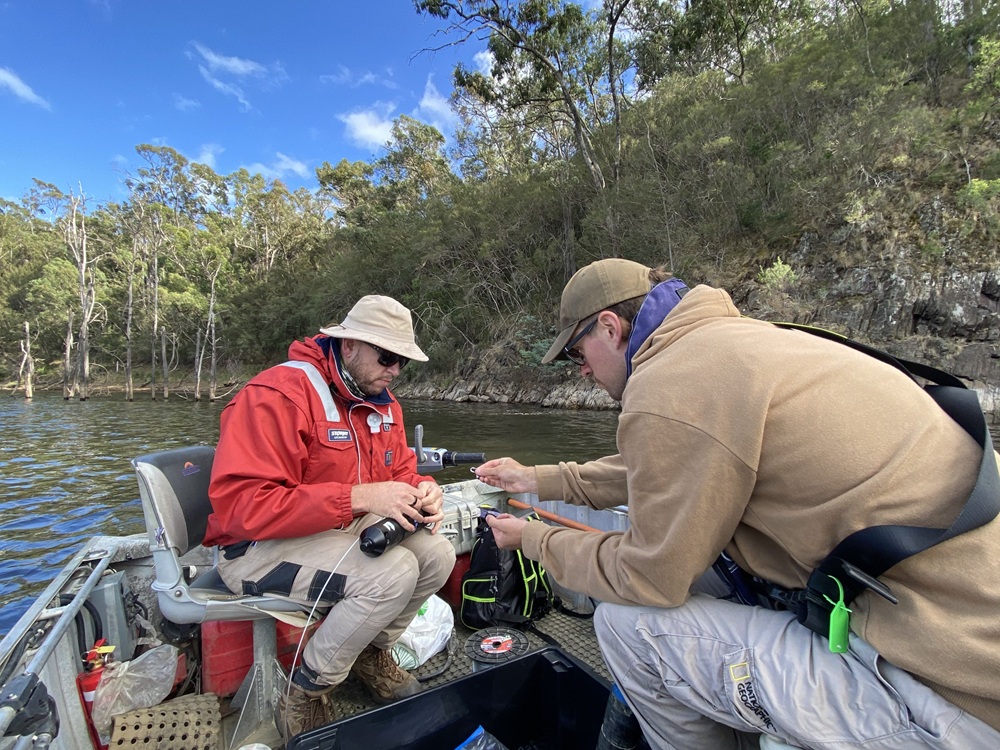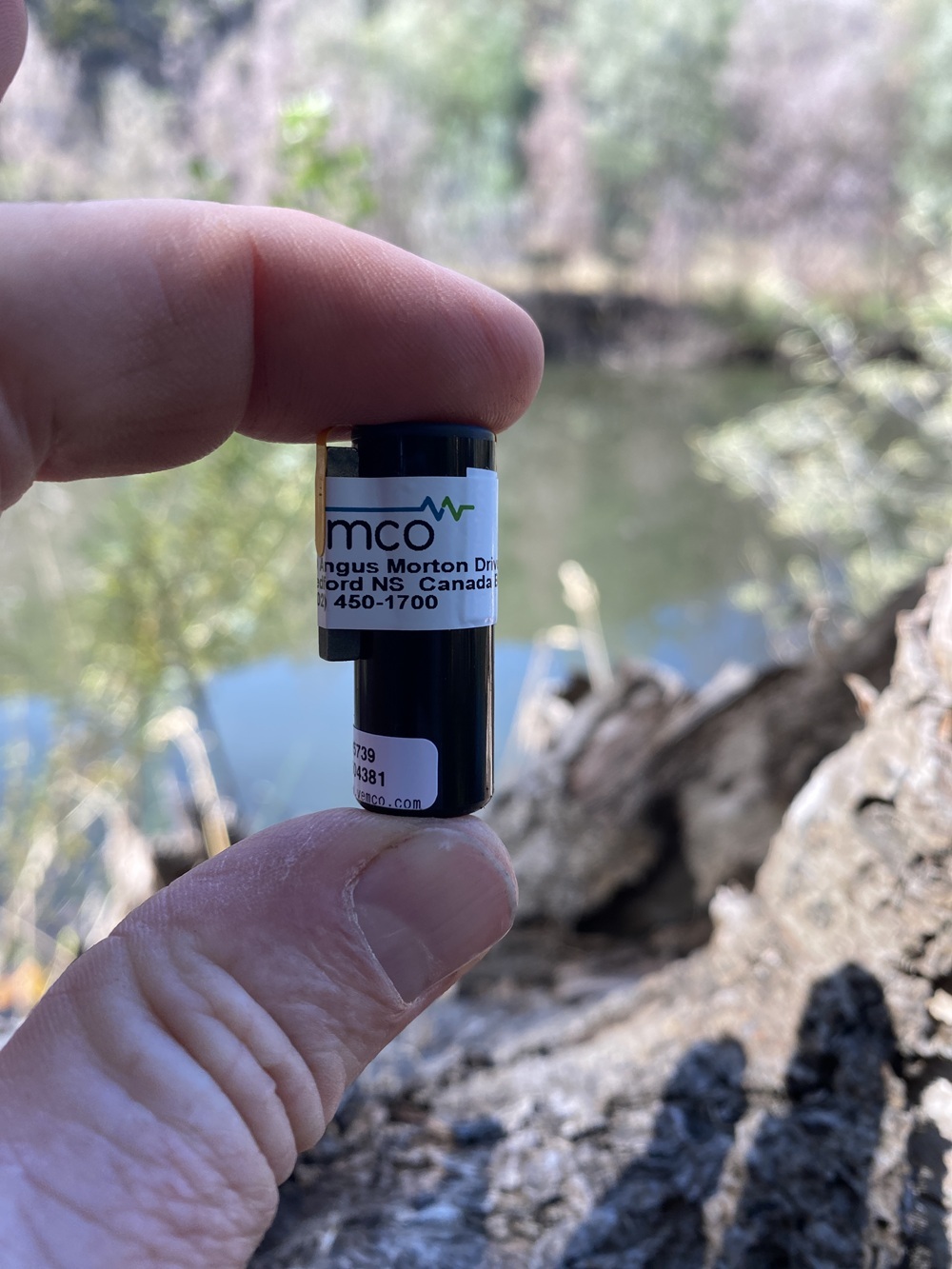
Recent VFA research has shed more light on the behaviour of Eildon cod like this - and therefore how to better target them on fly.
Lake Eildon in Victoria is one of Australia's best Murray cod fisheries, known for trophy-sized fish that can be longer than 130 cm. Fishers travel from far and wide for the possibility of catching an Eildon ‘big one’.
With the introduction of sophisticated depth sounders and scanning sonar, some would argue these tools have significantly increased catch rates. However, given not everyone has access to a boat or the ability to spend money on expensive technology, what other sources can be used to increase the chances of catching a metre cod in this enormous lake?
Recently, the Victorian Fisheries Authority (VFA) conducted research on Murray cod movement and habitat preference in Lake Eildon and the upper Goulburn River. The results provide flyfishers with valuable insights for targeting the lake's cod population, and improving their chances of catching large fish.
The method
Nineteen Murray cod averaging 93 cm (66 to 113 cm) in length were caught in 2022 – 2023, then fitted with electronic acoustic tags, and released in the Jamieson arm of Lake Eildon and the upper Goulburn River. Sixteen acoustic receivers, covering 32 km of lake and river, were used to ‘listen’ for any of the electronically tagged fish swimming by within 300 metres.
This innocous little transmitter can tell us a lot about what cod get up to.
The tags transmit data to the receivers such as the cod’s identifying number, the date, time, depth, temperature, and acceleration (a possible indicator of feeding behaviour). The 1.5 million data records were coupled with environmental parameters, and some fascinating results were revealed.

Implanting a tag into an anaethetised cod.
Locations and peak feeding
Analysing movement characteristics showed a cyclic pattern of cod inhabiting the main lake in the cooler months, and shallower tributaries and river systems during the warmer months. The movement trigger seemed to be highly correlated with river flow (rain).
During summer, cod are mainly found in the upper reaches of the lake’s tributaries, less than 2m deep, and most active (feeding) from dusk till dawn, with 6am the best time – particularly when water temperatures are approximately 20°C. During winter however, they are more likely to be found in deeper water during daylight hours (4-8m depth), moving to shallower water (less than 4m depth) at night. They are also very active when air pressure is less than 1000 hPa. Interestingly, no correlation with moon phase was observed.

Preparing to place an acoustic receiver (or 'listening post') in the lake.
So, for the flyfisher who’s getting a tired arm flogging large wets on 10-12 weights, consider integrating your own experience with what the science tells us, and you may end up catching that ‘metrey’ before too long.
For full breakdown of results including a presentation by Dr Corey Green, just head to the website https://vfa.vic.gov.au/secretlifeofcod












